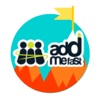Wow raids boost: old vs modern raiding
Introduction
WoW raids boost in the context of World of Warcraft is more about organized assistance, rather than a quick fix. Intentionalized, planned WoW raid runs assist groups to land upgrades in time, prevent raid nights to creep, and enables players to concentrate on learning instead of logistics.
Raid formats then and now
Raiding early on was based on 40 player teams, limited equipment and duration; as much as the presence of the team mattered than the repetition. In the present game, the raid structure has adopted smaller rosters, separated wings, and weekly schedules with more definition of checkpoints. That change also explained the niche a WoW raid carry occupies: a specific boss or wing of a raid in need of specific assistance at a certain time. Similarly, a planned raid carry in World of Warcraft is also a time-management lever and not a substitute to play.
Difficulty ladder today: LFR / Normal / Heroic / Mythic
The current raids scale in four layers.
- LFR – provides access to stories and little coordination;
- Normal – includes applied mechanics and simple assignments;
- Heroic – requires disciplined performance and roster management;
- Mythic – anticipates fixed comps, restricted timings, and the wipe-driven iteration.
A scoped WoW heroic raid boost or a timely WoW mythic raid boost is just a means to match progress with the calendar of a team, particularly when gearing or attendance is a bottleneck and would otherwise hold a week of progress.
Prep then vs now (what changed, what stayed)
| Then → | Now → | What changed | Practical effect |
| Long attunements | Streamlined entry | Less prep gatekeeping | Faster on-ramp for alts |
| Consumables as luxury | Consumables as baseline | Predictable burn rate | Budgeting replaces “hope” |
| DKP/loot master norms | Personal/Great Vault systems | Fewer loot disputes | Focus on clears, not admin |
| 40-player comps | Flexible 10–30 bodies | Role coverage > headcount | Roster stability improves |
A scoped World of Warcraft raid boost is also employed to fill in one checkpoint in lieu of a complete tier when time is limited.
Types of assistance (catalog of sensible use)
The result-based support is between a full clear and certain boss checkpoints, gear-up basket (enchants, sockets, crafted items), and a hybrid one, which is a quick clear with a certain material preparation. Mature WoW raid services post what and what is not included and when it begins/ends. In its nature, WoW raid boosting slots into a scheme that makes the roster learn and repeat each week.
Control models (piloted / self-play / remote control)
- Piloted. WoW booster handles most actions on the customer’s character within agreed steps and a narrow, scheduled window.
- Self-play. The player remains on the controls as the team provides routing and callouts; they are popular in learning mechanics by doing so.
- Remote control. Remote access on a case-by-case basis (a secure tool such as Parsec) with express permission and a predetermined slot; trusted teams write down steps and hand-offs to ensure a seamless session throughout.
Professional WoW boost service records the technique in advance, which is the hallmark of a well-run group, thus results are anticipated and not spontaneous.
“Support, not substitute” (where it actually helps)
Boosting does not intend to play the game on behalf of any one. Take an example of a bottleneck: a boss imprisons the group due to the fact that some of the characters are undergeared. A directed run provides a loot gateway or opens sockets; the next week, the players go down the boss on individual basis. In that regard, disciplined WoW boosts faster preparedness, whereas the coordinated WoW carries maintain raid evenings centered around mechanics and plan.
Buy vs DIY (compact decision cues)
- Is there a hard deadline? When a raid night is saved by a checkpoint, it is rational to buy WoW raid carry for choosed boss.
- Are sessions fragmented? Short daily windows rarely cross gear breakpoints; a single, scoped clear beats scattered attempts.
- Is the ask tiny and punctual? Buy WoW raid To land one piece this reset—then switch to normal progression— if you have an alt or a late joiner.
- Is learning the goal? Use forms of self-play to ensure that route information and performance enhancements remain attached.
Picking a provider (signals over slogans)
Reliable teams are not hype-driven, process-driven. Find written scope/exclusions, realistic start/ finish windows, named coordinator, and quote = invoice. The loop is closed by fast confirmation (what dropped, what cleared) after the run. It is the way a trustworthy WoW raid carry service works, and why a returning subscriber would recommend it to others instead of what the banners call an instant carry. Similarly, repeatable WoW raid boosts are not only products of a group that hits windows, but also prices.
TWW Snapshot — The War Within (11.2)
- Manaforge Omega raid nights. On raid prime as a two tranche window: list approximately 70% of phials/food/enchants approximately 60 minutes prior to pulls, followed by 30% at T-10-15, and a relist after initial tries. This schedule makes sure that the baskets are prepared in case of any on-the-day WoW mythic raid carry (e.g., one checkpoint to maintain the schedule).
- Reshanor weekly world boss. First overall kill in any week grants a Warband-until-Equipped item ilvl 688 (Champion 3/8) – a week-neutral timing anchor among alts. Coordinate gearing assistance such that WoW heroic raid carry augmenting lands sockets/enchants preceding the succeeding raid window.
- Bountiful Delves via Tazavesh portal room. Chain two short Delves out of the city hub, open end-chests with Restored Coffer Keys and turn the haul into two fast AH SKUs (one consumable, one component). This includes the normal expenses in between clears with no lengthy farm blocks.
- Phase Diving with Reshii Wraps. Advance the artifact cloak to unlock the routes that squeeze the travel and introduce speedy purposes; they go well with the gear-then-clear weeks.
Frequently Asked Questions
Is LFR worth running if the team raids Heroic?
Yes. During off times in a season it clears the gaps and educates the basics of encounter with minimal coordination.
What’s the difference between a checkpoint and a full clear?
A checkpoint targets one or two bosses with specific loot goals; a full clear prioritises pacing and lockout management.
Can assistance help us learn faster?
Remote-guided or self-play forms involve route notes and callouts; those practices are common in groups the following week.
How many hours should be budgeted for prep now vs then?
Nowadays, ordinary consumables and socket work are the baseline, lay those plans first, then select one of the outcomes at a time to follow up on each week.
Conclusion
Raiding has moved from attendance-gated marathons to planned, weekly progress with clear ladders and checkpoints. A modern approach blends deliberate prep, realistic scheduling, and occasional targeted support. Used that way, WoW raid runs keep teams learning and moving forward, while a scoped buy WoW raid carry bridges narrow timing gaps without overshadowing the core experience.
Related Apps
Latest News
- Wow raids boost: old vs modern raiding
- How Mythic Boosts Can Elevate Your WoW Gameplay Experience
- WoW and Reality: Crafting a Winning Game Strategy with Real-World Business Tactics
- Introduction to WoW Сarries - How & When to Use Them
- Ring in the New Year with Pokemon Go Costumed Pokemon, New Avatar Items, and More
- Download Raids of Glory Hack For Unlimited Gold Without Jailbreak






